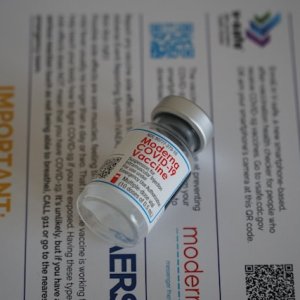Cost Should Not Be the Only Focus of Healthcare: Ultragenyx

STORY INLINE POST
Q: What has been Ultragenyx’s differentiator in the global market?
A: From its founding, Ultragenyx developed a different mechanism for clinical trials for orphan diseases that would facilitate the FDA’s analysis of the research process. Orphan diseases usually have smaller groups for trials and, knowing this, Ultragenyx’s developed innovative trial designs, for example in a small cohort patients would act as control to other patients as they would transition into therapy. In this type of trial, patients start treatment progressively and researchers can compare patient outcomes regardless of the start date, making it easier for regulatory authorities to analyze the drug’s performance.
Q: How important is Mexico for Ultragenyx’s global operations?
A: Mexico has a broad genetic diversity, which is a research advantage for companies and patients. Despite complexities, Ultragenyx has included Mexican patients in clinical trials but the process requires several COFEPRIS approvals that usually take a long time to arrive.
COFEPRIS has a significant backlog for many approval processes for innovative treatments of rare diseases. The commission has developed a differentiated approval pathway for orphan drugs. While this process has not been faster, it has welcomed innovation.
Innovation for rare and orphan diseases is being challenged by the General Health Council’s limited inclusion of these medications on the basic medicine scheme. Some institutions have been resistant to accepting innovation because of the associated high costs, which is not well accepted by public institutions. Public and private providers should ally to reduce costs and provide better health services.
Mexico is part of our clinical trials to later facilitate market access. We work closely with the National Institute of Pediatrics, the Children's Hospital of Mexico Federico Gómez and the INCMNSZ, among other institutions that have a proven record of clinical trials.
Q: Mexico’s General Health Council created a national census for patients with rare diseases. What does this mean for patients?
A: This initiative aims to provide a wider scope of these diseases, opening the door to multidisciplinary management that will provide more certainty for the Mexican health budget. This census aims to improve the system and treatment for patients suffering from these diseases. However, the census was suspended shortly after its start and it is unknown when it will restart. Since its suspension, patients have expressed their wish to restart the survey so it can fulfill its goal.
Q: The costs to treat rare diseases often surpass the economic burden of many of the most expensive chronic diseases. How is Ultragenyx addressing this?
A: With rare and orphan diseases, it is hard to talk about competitiveness because they usually require unique treatments. Moreover, finding investment in the field is challenging. To promote investment, we have worked with regulatory agencies, such as the US Food and Drug Administration (FDA) and the European Medicines Agency (EMA), to spur developments through the provision of extended patents, tax benefits and other incentives that would strengthen R&D in the field.
The conundrum about healthcare costs has led to many discussions about the value of a life, an even more delicate discussion in the case of rare diseases because they affect only a limited group of people. The discussion should focus on outcomes and impact not on drug prices. In the end, it will always be less expensive to do nothing than to act. As orphan diseases affect a small number of patients, usually economic impact is not very high in the whole healthcare expenditure, as it would be for other chronic more common diseases.
Q: How much does the company allocate to R&D? What are the current priorities of this division?
A: More than half of our expenditure is allocated to R&D. We are a relatively young company with 12 years in the market but only four in the US and two in Mexico. Thus, much of our investment is geared toward clinical research and commercialization.
Q: As the digital transformation spreads in the sector, how is Ultragenyx integrating this trend and others to improve its internal operation and support patients and doctors?
A: Many of the solutions we provide require a diagnosis provided by a genetic test. Ultragenyx offers a diagnostic program that integrates digital platforms to support doctors and patients with their genetic diagnostic testing. We will provide this solution but the alliance will be strongly supported by diagnostic laboratories.
We are strong supporters of health and telemedicine but we are aware that some situations call for in-person interactions between patients and doctors, or between pharmaceutical companies and doctors. Internally, we migrated to remote working for positions that do not need to be in the field. Ultragenyx was already a supporter of tech prior to the pandemic but we enhanced our tech adoption after it.
Ultragenyx is a biopharmaceutical company involved in R&D related to novel products for the treatment of rare and ultra-rare genetic diseases








 By Miriam Bello | Senior Journalist and Industry Analyst -
Tue, 03/15/2022 - 16:17
By Miriam Bello | Senior Journalist and Industry Analyst -
Tue, 03/15/2022 - 16:17
















